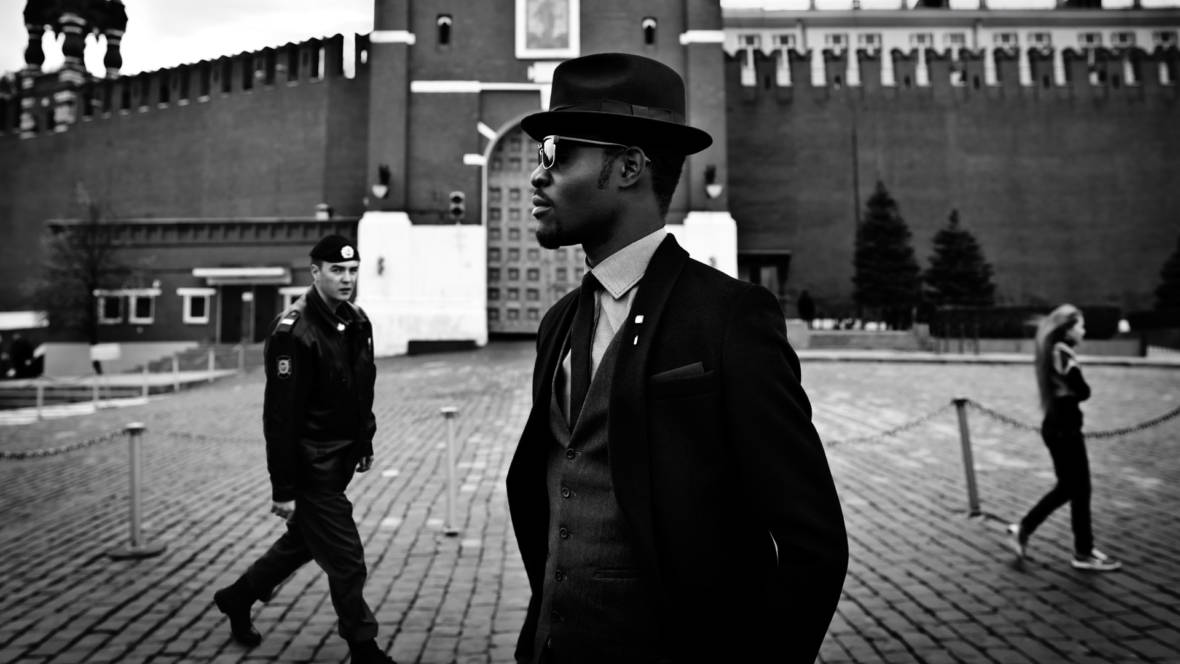Category
arts and culture, WebAbout This Project
The second floor of San Francisco’s Museum of the African Diaspora (MoAD) is lined with beautiful photos of Black men in suits. The men look like they’ve contemplated every detail of their well-fitting ensembles. The colors, accents and textures are all intentional. Urban landscapes from New York to Moscow serve as their backdrop. The crisp tailoring invokes the dapperness of the Harlem Renaissance.
“There’s a state of urgency, not just here in the U.S., but also around the world,” says Shantrelle P. Lewis, curator of Dandy Lion: (Re) Articulating Black Masculinity, on view at MoAD through September.
“There’s a necessity to express a multitude of stories that explain and also express our true selves, our culture, our aesthetics, our spirituality, and our cosmology,” says Lewis. “I feel like Dandy Lion is a juxtaposition of a very narrow, pathological story about Black people and specifically about Black men.”
The traveling exhibition is in its sixth year of showing across the country and internationally. The current iteration includes photos taken in South Africa by Harness Hamese, a short film by Terrance Nance, and interviews filmed during London’s African Street Style Festival in which participants talk about redefining what it means to be Black men in urban environments.
While Dandy Lion is often talked about as countering stereotypes by showing Black men in something other than baggy pants, Lewis is clear that this exhibit is not about respectability politics.
“Respectability is about doing something for the approval of white society, or dressing up for white society so we can be seen as equals to white people or we can be respected,” says Lewis, “but when you look at the aesthetics of people of African decent, dressing up has always been part of our culture and who we were. The spirit of dandyism as it relates to Black men at least, is something that is very spiritual and something that comes from a long tradition of pride within the Black community, like cultural pride, spiritual elevation.”
Lewis also tackles misconceptions about masculinity, sexuality and style. At the beginning of the project she focused on cis-gendered straight men but eventually included cis-gendered Black men with a variety of sexual identities.
“When people come to the exhibit they do not know who is gay or straight. And it doesn’t really matter. And that’s the point,” says Lewis.
When the exhibition opened in San Francisco, MoAD Vanguard (the museum’s young professionals membership group) hosted a conversation that examined the evolution of Black male identity and style.
“The panel really resonated with me, being a personal stylist, being Black, and not being a gay man in an industry that people assume is for gay men or women,” says Dario Smith, wardrobe consultant and co-founder of The Bellwether Project. “We discussed what it means to be well dressed, and not be looked at as feminine or like you have taken away your manhood because you thought about your outfit that day.”
Lewis is currently working on a Dandy Lion book that will include photography from the current exhibition at MoAD.
“I want to look at vintage Black dandies like the men of our families. There are so many pictures of the men in my family being dressed up. They would never leave the house without a hat. It was part of their uniform, essentially,” says Lewis. “That’s the same stories for my friends from literally around the diaspora. There are so many examples of these men in our families that I want to pay tribute to them.”


